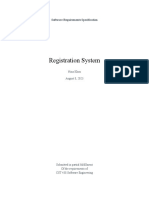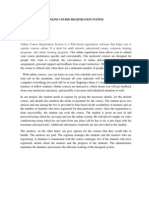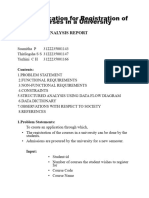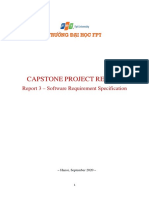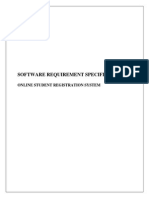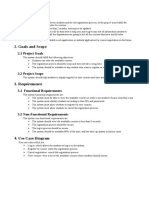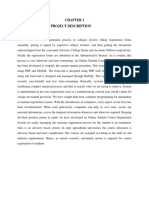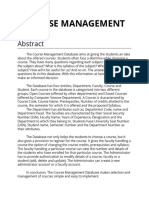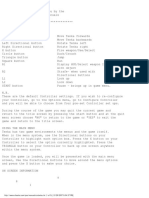0% found this document useful (0 votes)
71 views8 pagesSoftware Requirements Specification
The document provides requirements for a registration service system including:
1) An overview of the system environment with two active actors (Administrator and Student) and one cooperating system.
2) Four functional requirements (Add Student, View Schedule, Enroll Course, Drop Course) defined by use cases.
3) Two non-functional requirements related to performance and security.
4) Minimum browser specifications.
5) Logical database requirements including data entities for Courses, Enrollments, and Students.
Uploaded by
api-595755064Copyright
© © All Rights Reserved
We take content rights seriously. If you suspect this is your content, claim it here.
Available Formats
Download as PDF, TXT or read online on Scribd
0% found this document useful (0 votes)
71 views8 pagesSoftware Requirements Specification
The document provides requirements for a registration service system including:
1) An overview of the system environment with two active actors (Administrator and Student) and one cooperating system.
2) Four functional requirements (Add Student, View Schedule, Enroll Course, Drop Course) defined by use cases.
3) Two non-functional requirements related to performance and security.
4) Minimum browser specifications.
5) Logical database requirements including data entities for Courses, Enrollments, and Students.
Uploaded by
api-595755064Copyright
© © All Rights Reserved
We take content rights seriously. If you suspect this is your content, claim it here.
Available Formats
Download as PDF, TXT or read online on Scribd
/ 8



